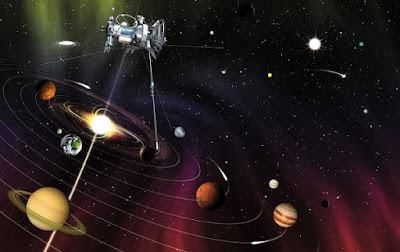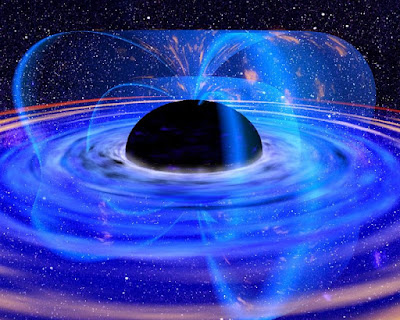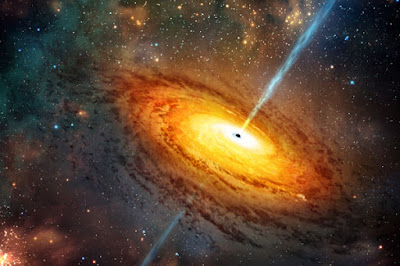Astrophysics
what is astrophysics?
Astrophysics may be a branch of area science that applies the laws of physics and chemistry to elucidate the birth, life and death of stars, planets, galaxies, nebulae and different objects within the universe like black hole . it's 2 relation sciences, physical science and cosmology, and also the lines between them blur.
In the most rigid sense:
Astronomy measures positions, luminosities, motions and different characteristics
Astrophysics creates physical theories of tiny to medium-size structures within the universe
Cosmology will this for the biggest structures, and also the universe as an entire.
In follow, the 3 professions type a integrated family. evoke the position of a nebula or what quite light-weight it emits, and also the physicist would possibly answer 1st. raise what the nebula fashioned|is created} of and the way it formed and also the uranologist can pipe up. raise however the information work with the formation of the universe, and also the uranologist would in all probability jump in. however be careful — for any of those queries, 2 or 3 could begin talking at once!
Goals of astrophysics
Astrophysics obtain to know the universe and our place in it. At NASA, the goals of astronomy area unit "to discover however the universe works, explore however it began and evolved, and hunt for life on planets around different stars," according NASA's web site.NASA states that those goals turn out 3 broad questions:
How will the universe work?
How did we have a tendency to get here?
Are we have a tendency to alone?
It began with Newton
While physical science is one in every of the oldest sciences, theoretical astronomy began with physicist. before Newton, astronomers delineate the motions of heavenly bodies victimization advanced mathematical models while not a physical basis. Newton showed that one theory at the same time explains the orbits of moons and planets in area and also the flight of a missile on Earth. This other to the body of proof for the (then) surprising conclusion that the heavens and Earth area unit subject to constant physical laws.Perhaps what most fully separated Newton's model from previous ones is that it's prophetical also as descriptive. supported aberrations within the orbit of Uranus, astronomers expected the position of a brand new planet, that was then determined and named Neptune. Being prophetical also as descriptive is that the sign of a mature science, and astronomy is during this class.
Milestones in astrophysics
Because the sole method we have a tendency to act with distant objects is by perceptive the radiation they emit, abundant of astronomy needs to do with deducing theories that designate the mechanisms that turn out this radiation, and supply ideas for a way to extract the foremost data from it. the primary ideas regarding the character of stars emerged within the mid-19th century from the inflorescence science of spectral analysis, which implies perceptive the precise frequencies of sunshine that individual substances absorb and emit once heated. Spectral analysis remains essential to the threesome of area sciences, each guiding and testing new theories.Early chemical analysis provided the primary proof that stars contain substances additionally gift on Earth. chemical analysis discovered that some nebulae area unit strictly gassy, whereas some contain stars. This later helped cement the concept that some nebulae weren't nebulae in the slightest degree — they were different galaxies!
In the early Twenties, Cecilia Payne discovered, victimization chemical analysis, that stars area unit preponderantly H (at least till their previous age). The spectra of stars additionally allowed astrophysicists to work out the speed at that they move toward or removed from Earth. rather like the sound a vehicle emits is totally different moving toward U.S.A. or removed from U.S.A., as a result of the propagation, the spectra of stars can modification within the same method. within the Thirties, by combining the propagation and Einstein's theory of Einstein's theory of relativity, astrophysicist provided solid proof that the universe is increasing. this can be additionally expected by Einstein's theory, and along type the idea of the massive Bang Theory.
Also within the mid-19th century, the physicists Lord Kelvin (William Thomson) and Gustav Von Hermann speculated that implosion might power the sun, however eventually realised that energy created this fashion would solely last one hundred,000 years. Fifty years later, Einstein's notable E=mc2 equation gave astrophysicists the primary clue to what truth supply of energy may well be (although it seems that implosion will play a very important role). As physics, quantum physics and physics grew within the half of the twentieth century, it became attainable to formulate theories for a way nuclear reaction might power stars. These theories describe however stars type, live and die, and with success make a case for the determined distribution of styles of stars, their spectra, luminosities, ages and different options.
Astrophysics is that the physics of stars and different distant bodies within the universe, however it additionally hits about to home. consistent with the massive Bang Theory, the primary stars were nearly entirely H. The nuclear reaction method that energizes them smashes along chemical {element|element|gas} atoms to create the heavier element noble gas. In 1957, the husband-and-wife physicist team of Geoffrey and Margaret Burbidge, beside physicists William Alfred the Great Fowler and astrophysicist, showed how, as stars age, they turn out heavier and heavier components, that they pass away to later generations of stars in ever-greater quantities.
it's solely within the final stages of the lives of newer stars that the weather creating up the world, like iron (32.1 percent), oxygen (30.1 percent), atomic number 14 (15.1 percent), area unit created. Another of those components is carbon, that beside element, structure the majority of the mass of all living things, as well as U.S.A.. Thus, astronomy tells U.S.A. that, whereas we have a tendency to aren't all stars, we have a tendency to area unit all romance.
In college, students ought to aim to (eventually) complete a degree in astronomy, then fight a post-doctoral position in astronomy. Astrophysicists will work for the govt, university labs and, sometimes, personal organizations.
Study.com additional recommends the subsequent steps to place you on the trail to being AN astrophysicist:
Take science and science categories during highschool. check that to require a large sort of science categories. physical science and astronomy usually mix parts of biology, chemistry and alternative sciences to raised perceive phenomena within the universe. additionally keep an eye fixed out for any summer jobs or internships in science or science. Even volunteer work will facilitate bolster your resume.
Pursue a math- or science-related degree. whereas a bachelor in astronomy is that the ideal, there square measure several alternative ways thereto field. you'll do college boy study in computing, for instance, that is very important to assist you analyze knowledge. it is best to talk to your highschool steering counselor or native university to seek out out what degree programs can assist you.
Take on analysis opportunities. several universities have labs within which students participate in discoveries — and generally even get revealed. Agencies like independent agency additionally supply internships from time to time.
Finish a degree in astronomy. A Ph.D. may be a long-term, but the U.S. Bureau of Labor Statistics points out that the majority astrophysicists do have a degree degree. check that to incorporate courses in physical science, computing, arithmetic, physics and statistics to possess a large base of information.
Natalie Hinkel, a planetary stargazer WHO was then at Arizona State University, gave a long interview with Lifehacker in 2015 that provided a glimpse into the rewards and challenges of being a junior astronomy scientist. She represented the long range of years she has place into doing her analysis, the frequent job switches, her work hours and what it's wish to be a girl during a competitive field. She additionally had a noteworthy insight concerning what she really did day to day. little or no of her time is spent at the telescope.
"I pay the overwhelming majority of my time programming. most of the people assume that astronomers pay all of their time at telescopes, however that is solely a awfully little fraction of the task, if at all. I do some observations, however within the past few years I've solely been perceptive double for a complete of concerning time period," Hinkel told Lifehacker.
"Once you get the information, you've got to cut back it (i.e. eliminate the dangerous components and method it for real information), typically mix it with alternative knowledge so as to ascertain the full image, then write a paper concerning your findings. Since every observation run usually yields knowledge from multiple stars, you do not have to be compelled to pay all of some time at the telescope to possess enough work."
Astrophysics as a career
Becoming AN Astrophysicist needs years of observation, coaching and work. however you'll begin changing into concerned during a little means even in elementary and highschool, by connection physical science clubs, attending native physical science events, taking free on-line courses in physical science and astronomy, and maintaining with news within the field on a web site like area.com.In college, students ought to aim to (eventually) complete a degree in astronomy, then fight a post-doctoral position in astronomy. Astrophysicists will work for the govt, university labs and, sometimes, personal organizations.
Study.com additional recommends the subsequent steps to place you on the trail to being AN astrophysicist:
Take science and science categories during highschool. check that to require a large sort of science categories. physical science and astronomy usually mix parts of biology, chemistry and alternative sciences to raised perceive phenomena within the universe. additionally keep an eye fixed out for any summer jobs or internships in science or science. Even volunteer work will facilitate bolster your resume.
Pursue a math- or science-related degree. whereas a bachelor in astronomy is that the ideal, there square measure several alternative ways thereto field. you'll do college boy study in computing, for instance, that is very important to assist you analyze knowledge. it is best to talk to your highschool steering counselor or native university to seek out out what degree programs can assist you.
Take on analysis opportunities. several universities have labs within which students participate in discoveries — and generally even get revealed. Agencies like independent agency additionally supply internships from time to time.
Finish a degree in astronomy. A Ph.D. may be a long-term, but the U.S. Bureau of Labor Statistics points out that the majority astrophysicists do have a degree degree. check that to incorporate courses in physical science, computing, arithmetic, physics and statistics to possess a large base of information.
Natalie Hinkel, a planetary stargazer WHO was then at Arizona State University, gave a long interview with Lifehacker in 2015 that provided a glimpse into the rewards and challenges of being a junior astronomy scientist. She represented the long range of years she has place into doing her analysis, the frequent job switches, her work hours and what it's wish to be a girl during a competitive field. She additionally had a noteworthy insight concerning what she really did day to day. little or no of her time is spent at the telescope.
"I pay the overwhelming majority of my time programming. most of the people assume that astronomers pay all of their time at telescopes, however that is solely a awfully little fraction of the task, if at all. I do some observations, however within the past few years I've solely been perceptive double for a complete of concerning time period," Hinkel told Lifehacker.
"Once you get the information, you've got to cut back it (i.e. eliminate the dangerous components and method it for real information), typically mix it with alternative knowledge so as to ascertain the full image, then write a paper concerning your findings. Since every observation run usually yields knowledge from multiple stars, you do not have to be compelled to pay all of some time at the telescope to possess enough work."










2 Comments
Good article
ReplyDeletethanks ismail
Delete